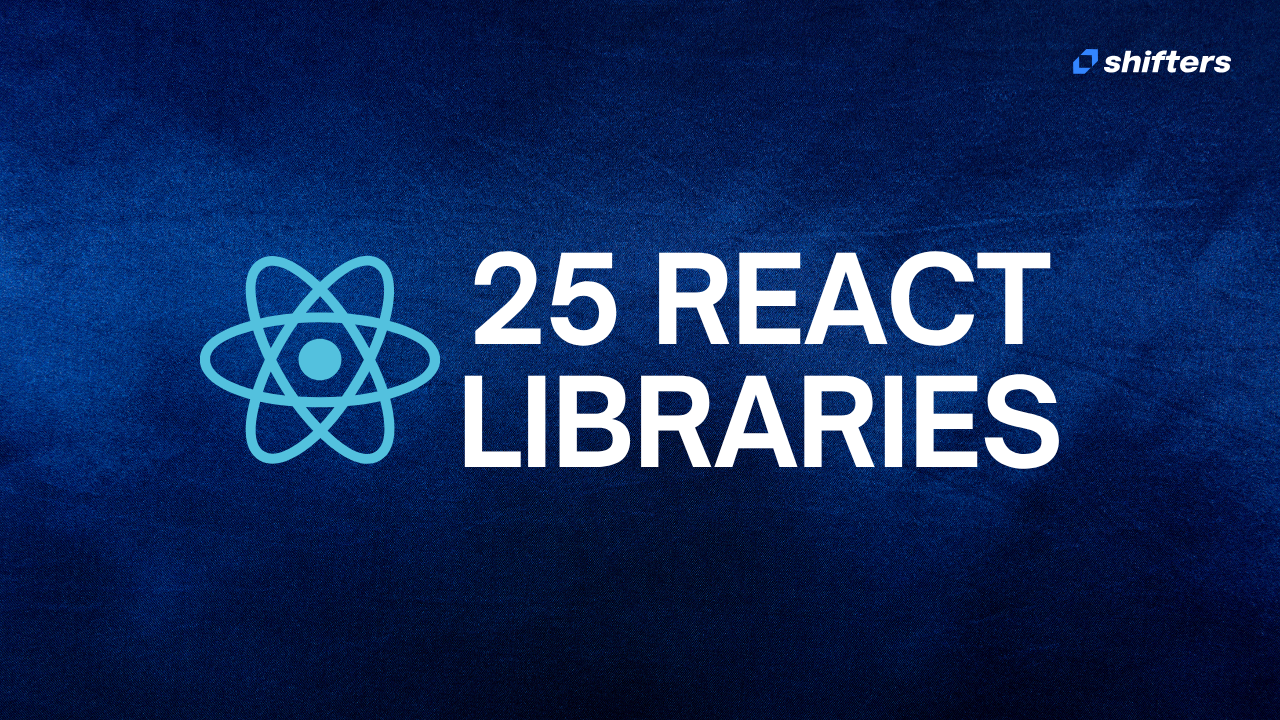React is still one of the most popular JavaScript frameworks in 2025. This guide shows you 25 important React libraries that make development faster and better. These tools help solve common problems and let you build great user interfaces that are easy to maintain.
1. React Router - Navigation Management
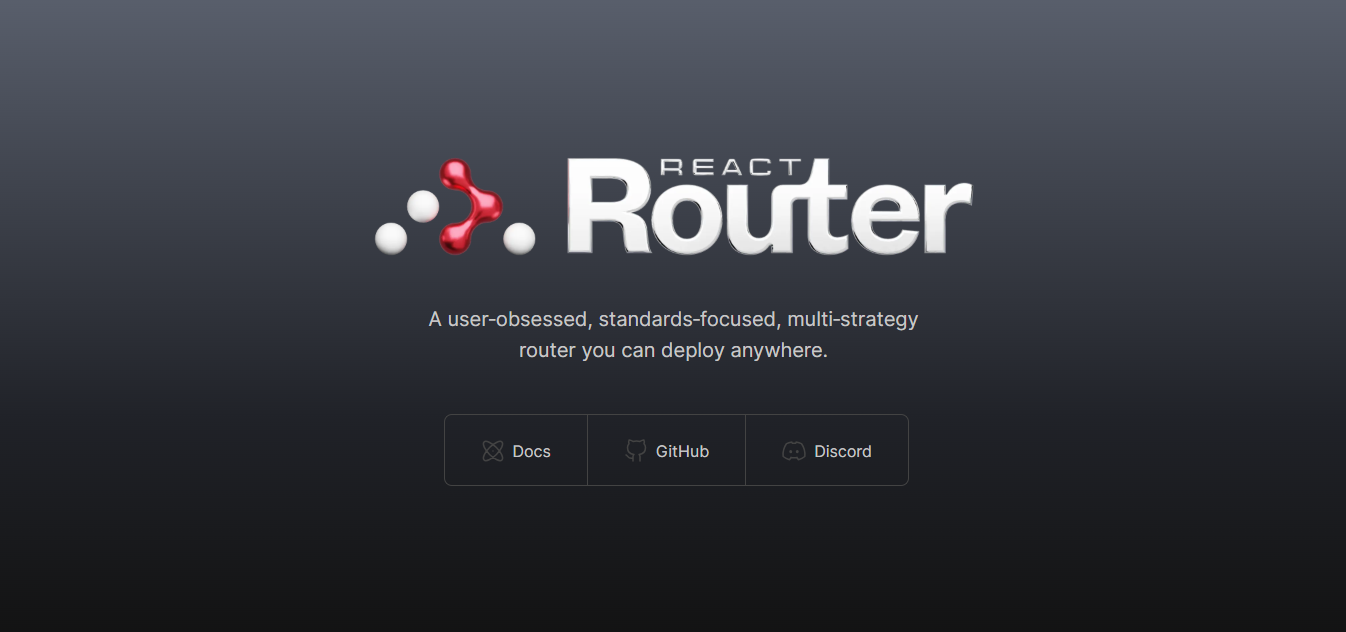
(Source: React Router)
React Router helps you manage navigation in single-page applications without the hassle of doing it manually. It lets you handle multiple routes with nested routing, create dynamic URL parts like /profile/:userId, and keeps your app fast while feeling like it has multiple pages.
Core Features
The library provides comprehensive routing capabilities including nested routing, dynamic route parameters, programmatic navigation, and route guards. It maintains application state during navigation and supports both hash-based and browser history routing modes.
Use Cases
This library is a must-have for apps that need more than just basic single-page functionality. Perfect for dashboard applications, e-commerce sites, and any multi-page React application that needs clean URL management.
2025 Updates
Better route transitions with smooth fade-in effects and improved user experience.
2. Redux - State Management Foundation
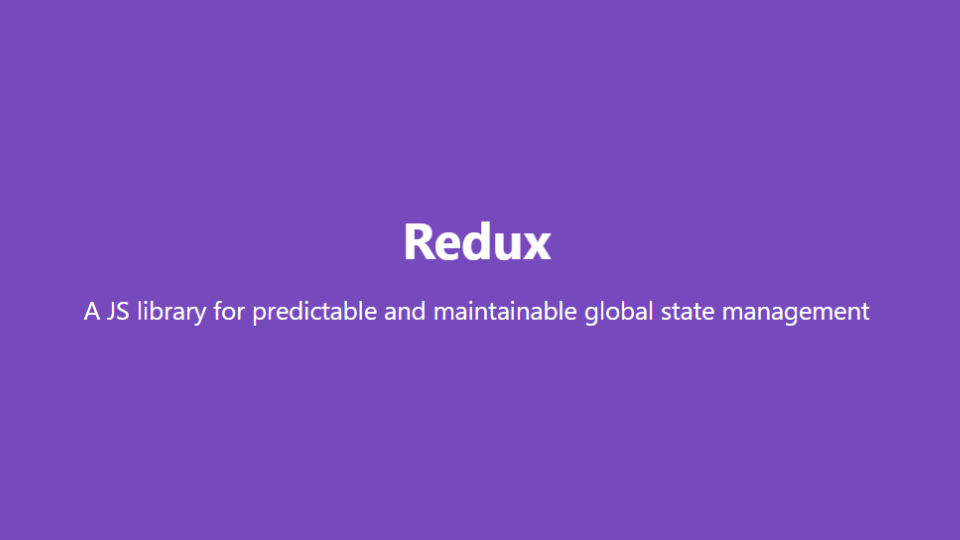
(Source: Redux)
Redux is still the go-to choice for managing complex app state and works great for large applications. It gives you predictable state updates with a central store, great debugging tools through Redux DevTools, and strong community support.
Core Features
Redux implements a unidirectional data flow pattern with actions, reducers, and a single store. It provides time-travel debugging, middleware support for async operations, and predictable state mutations that make debugging easier.
Best For
Redux works best for apps with complex state changes and lots of data connections between different parts. Ideal for applications with multiple user roles, complex business logic, and shared state across many components.
2025 Updates
Better Redux Toolkit patterns, less repetitive code, and smoother development workflow.
3. Recoil - Modern State Management
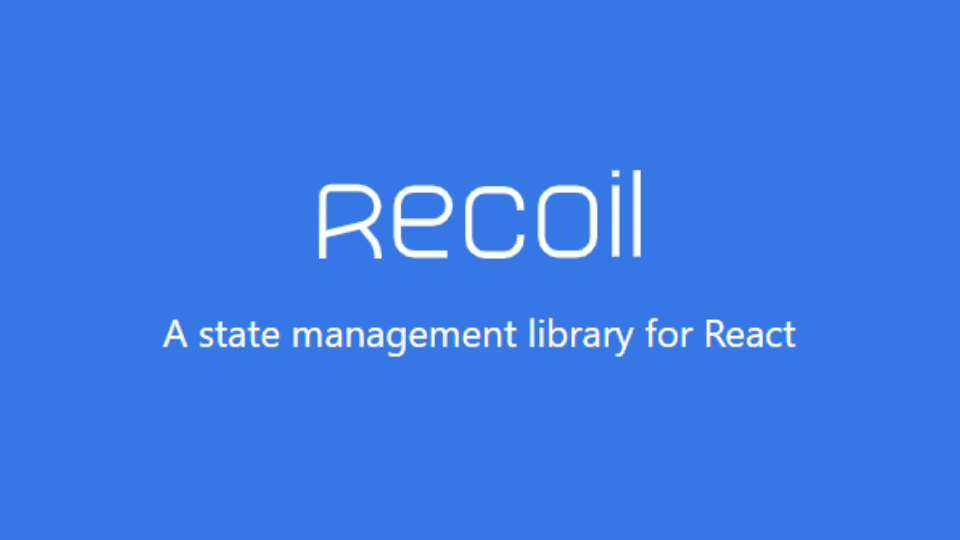
(Source: Recoil)
Recoil is a newer way to manage state that works perfectly with modern React development using hooks. It has an easy-to-use hook-based design that fits naturally with existing React Hook patterns and is much simpler to set up than older state management tools.
Core Features
Recoil uses atoms for state pieces and selectors for derived state, providing a more granular approach to state management. It supports async selectors, state snapshots, and minimal re-renders for better performance.
Best For
Recoil is perfect for teams that already use React Hooks everywhere in their apps. Great for medium-sized applications that need more than useState but don't require Redux's complexity.
2025 Updates
Better selectors, improved handling of multiple operations, and works with more React features.
4. React Query - Data Fetching Solution
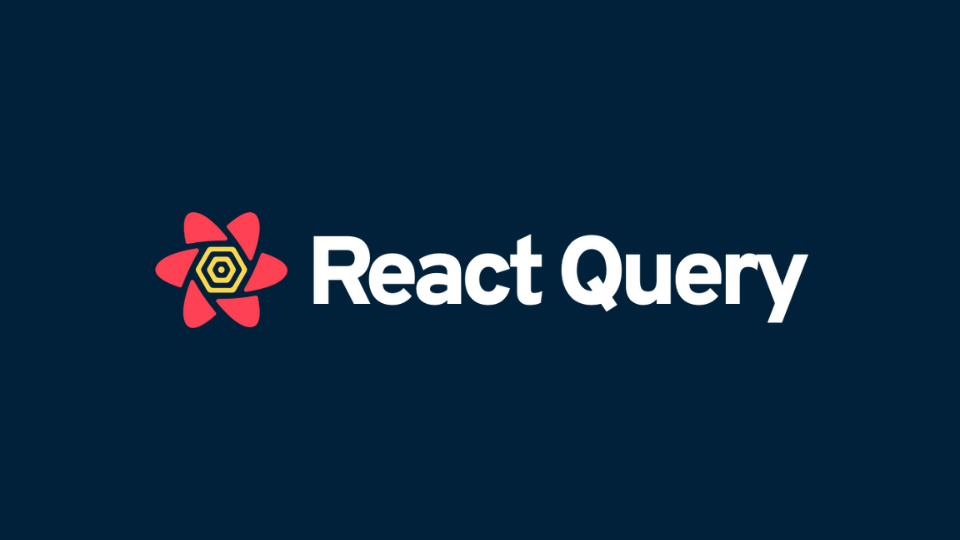
(Source: React Query)
React Query takes care of data fetching, caching, and keeping data in sync, so you can focus on building your user interface instead of managing data complexity. It automatically caches data and updates it in the background, handles optimistic updates with good error handling, and cuts down on repetitive data fetching code.
Core Features
The library provides intelligent caching, background refetching, optimistic updates, and pagination support. It handles loading states, error boundaries, and retry logic automatically while keeping your UI responsive.
Benefits
This library makes your app faster while making data management much easier. Reduces boilerplate code by up to 70% and provides better user experience with smart caching and background updates.
2025 Features
Support for streaming data, works offline, and smart caching that learns from usage.
5. Formik - Form Management
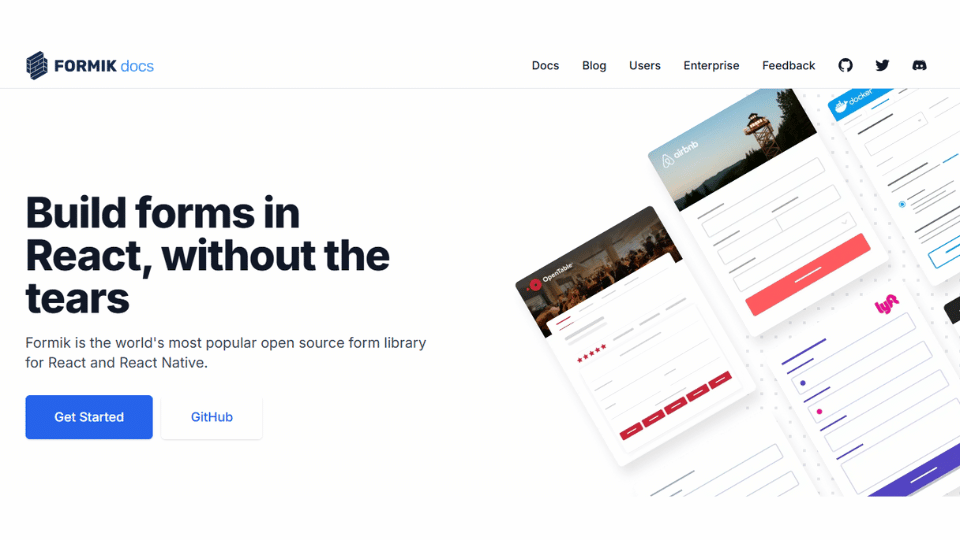
(Source: Formik)
Formik makes handling forms in React much easier by giving you organized ways to manage form state, validation, and submission. It simplifies form state management with built-in validation support and reduces the amount of form-related code you need to write.
Core Features
Formik handles form state, validation, error messages, and form submission with a simple API. It supports field-level and form-level validation, handles nested objects and arrays, and provides easy integration with validation libraries like Yup.
Best For
This library is essential for apps with complex forms and detailed validation requirements, making form development more predictable and easier to maintain. Perfect for registration forms, surveys, and data entry applications.
2025 Updates
Better performance for large forms, partial re-rendering capabilities, and improved validation methods.
6. React Hook Form - Performance-Focused Forms
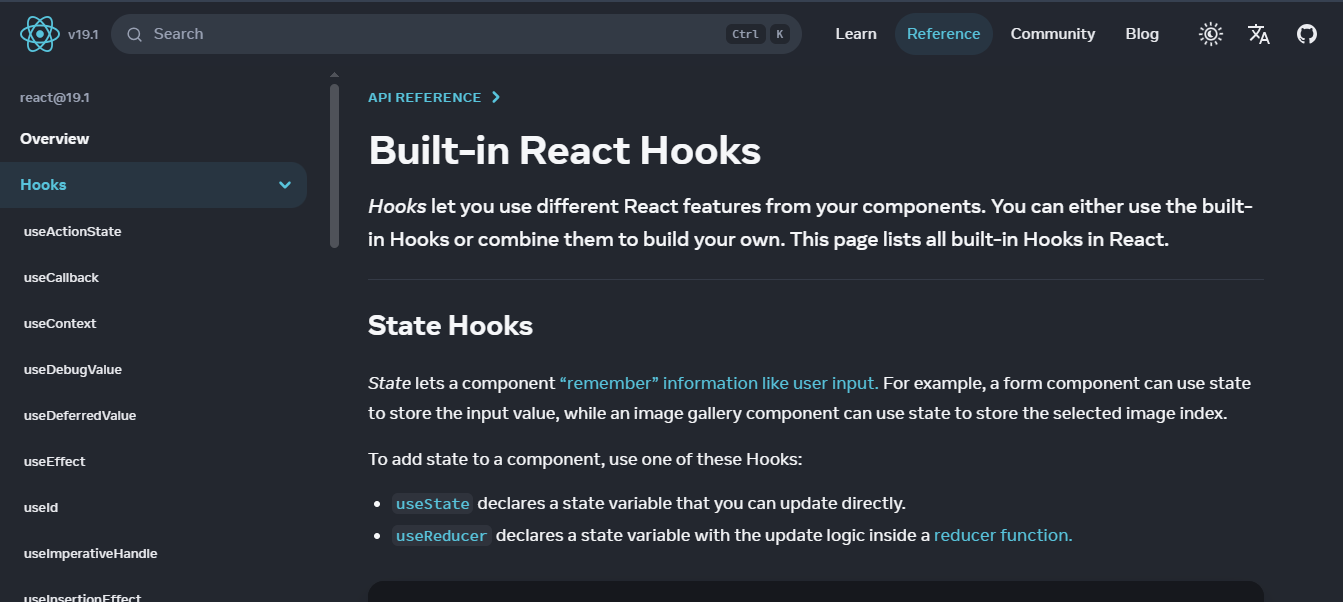
(Source: React Hooks)
React Hook Form focuses on performance by reducing unnecessary re-renders while still giving you all the form features you need. It has optimized rendering performance with a hook-based design and works well with popular UI libraries.
Core Features
Uses uncontrolled components by default to minimize re-renders, provides simple validation integration, and supports TypeScript out of the box. It has a smaller bundle size compared to other form libraries and excellent performance metrics.
Best For
This library is especially good for large forms and apps that need to work well on slower devices, giving you great performance without losing functionality. Ideal for complex forms with many fields and real-time validation.
2025 Updates
More plugins available with better integration for Material-UI and Chakra UI.hat feel real
7. React Spring - Physics-Based Animations
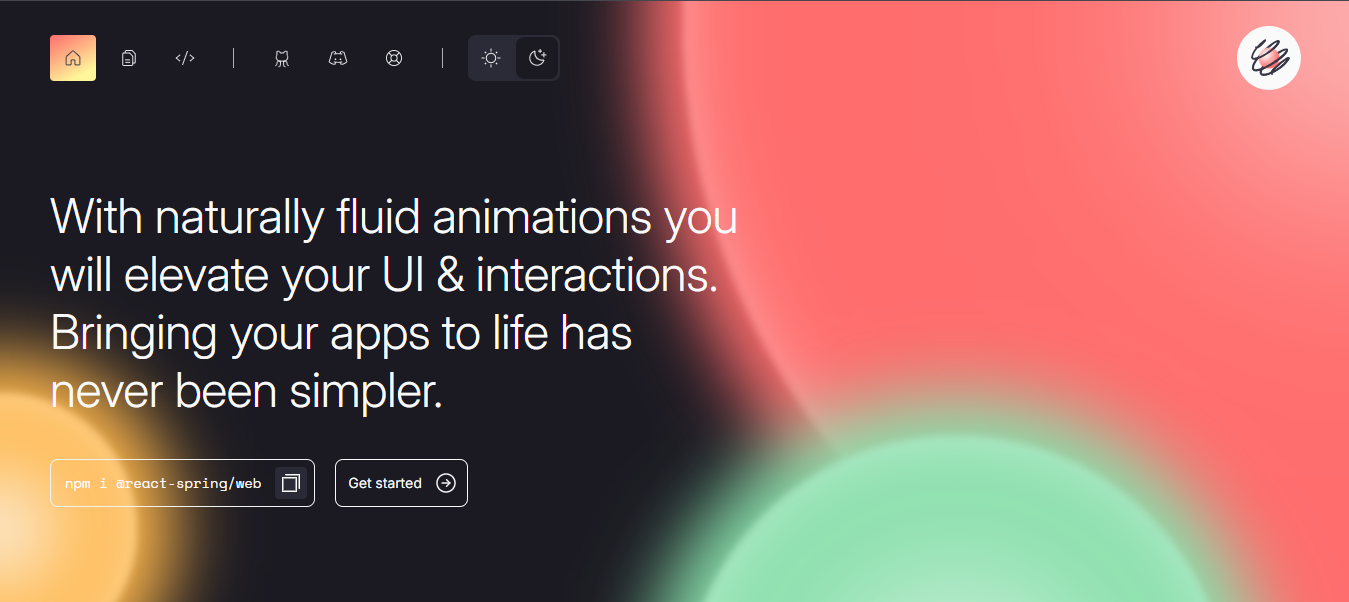
(Source: React Spring)
React Spring creates animations that feel natural and realistic by using physics-based calculations. It makes smooth animations through physics calculations, has a complete animation toolkit, and works smoothly on all devices.
Core Features
Uses spring-physics for natural motion, supports complex animation sequences, and provides hooks-based API for modern React development. It handles multiple animation types including transforms, colors, and SVG properties.
Benefits
This library makes your user experience better with professional animations without needing to understand complex physics, making advanced animations accessible to all developers. Creates more engaging interfaces with smooth, natural motion.
2025 Updates
Better 3D transformation support and simpler API for complex animation sequences.
8. Framer Motion - Professional Animation Library
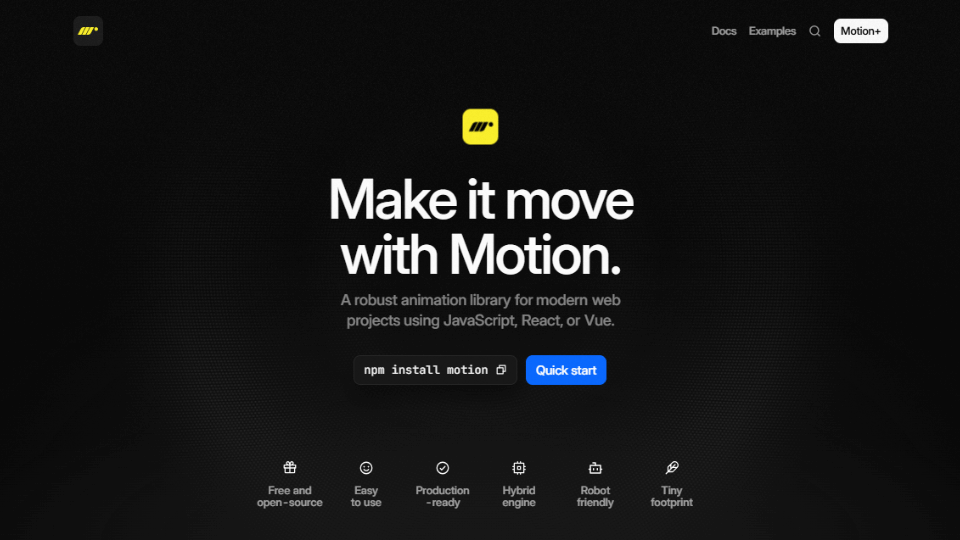
(Source: Framer Motion)
Framer Motion provides polished animations with simple APIs designed for professional user interface development. It offers layout animations with gesture support, drag-and-drop features, and high-performance animation rendering.
Core Features
Provides declarative animations, gesture recognition, drag and drop functionality, and layout animations. It supports SVG animations, path drawing, and complex animation orchestration with timeline controls.
Best For
This library is great for creating marketing-focused interfaces and interactive user experiences that need professional-quality animations and smooth performance. Perfect for landing pages, interactive demos, and premium applications.
2025 Updates
Support for VR/AR React experiences, expanding animation possibilities beyond traditional 2D interfaces.
9. React Three Fiber - 3D Interface Development
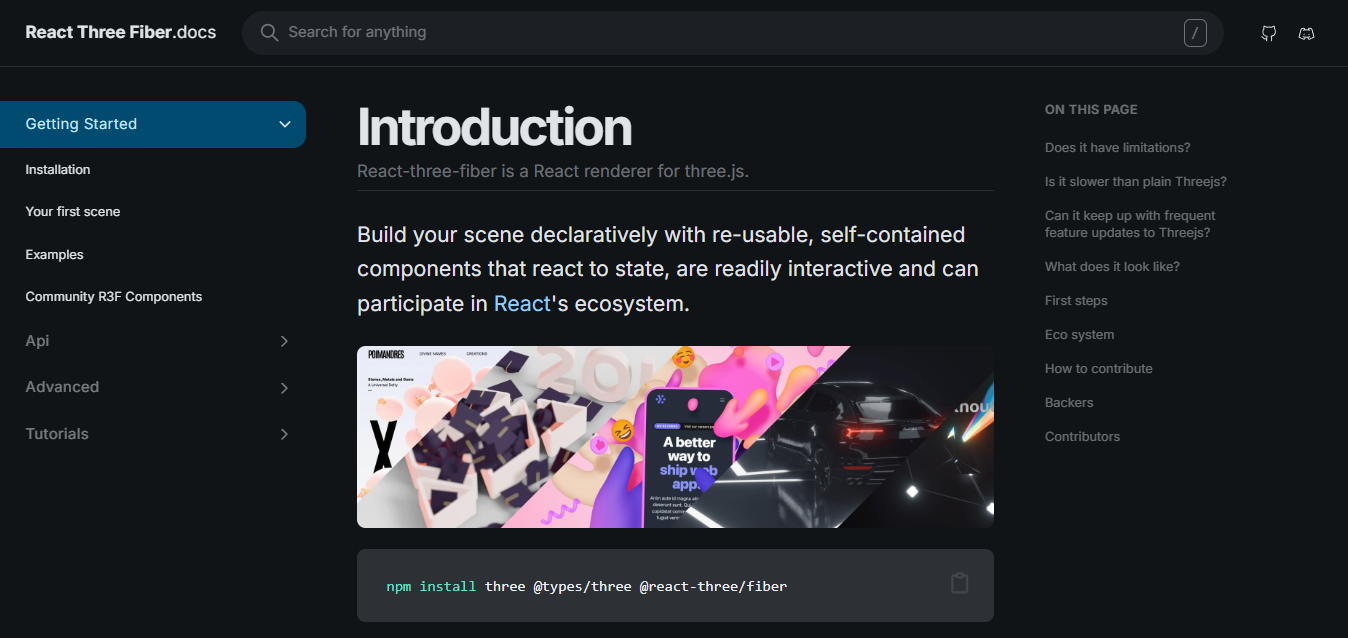
(Source: React Three Fiber)
React Three Fiber lets you add 3D elements to React apps, built on Three.js while keeping familiar React development patterns. It brings WebGL capabilities to the React world using familiar React component structure for 3D development.
Core Features
Provides React components for 3D scenes, supports Three.js ecosystem, and handles WebGL rendering with React's component lifecycle. It includes hooks for animations, camera controls, and 3D interactions.
Possibilities
This library opens up possibilities for immersive user interfaces and interactive 3D applications, bringing advanced visual capabilities to React developers. Enables creation of 3D visualizations, games, and interactive experiences.
2025 Updates
More 3D components available and easier physics integration.
10. Next.js - Full-Stack React Framework
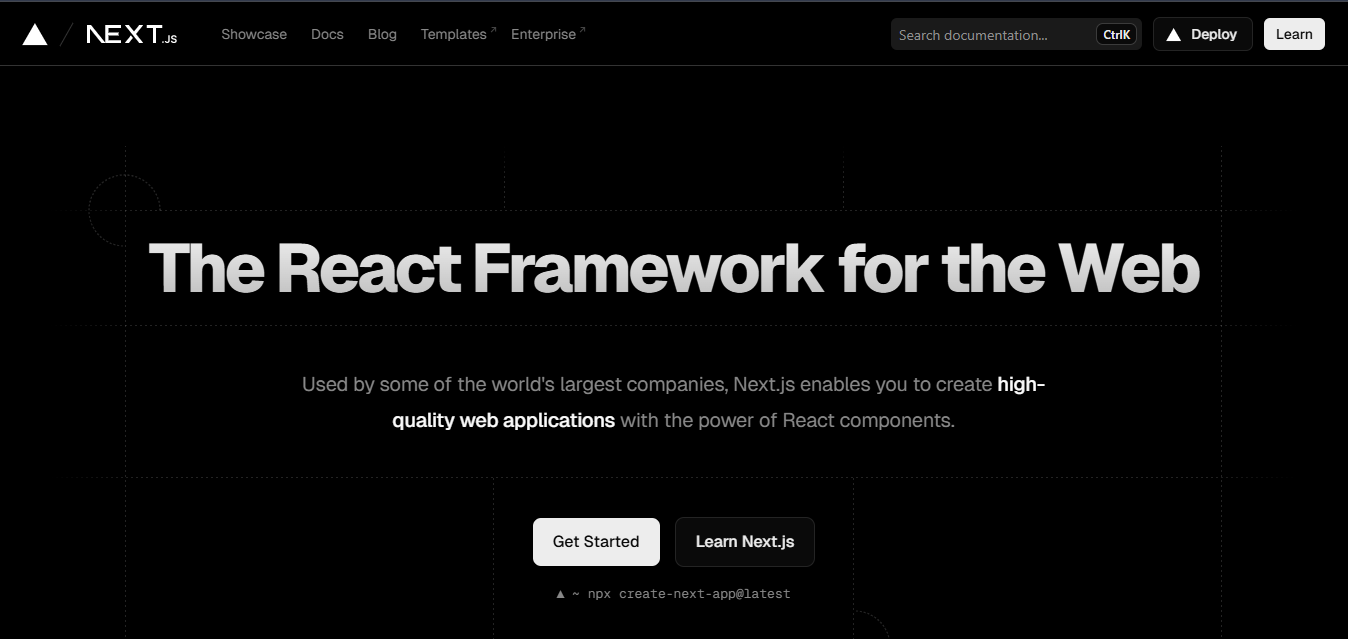
(Source: Next JS)
Next.js extends React with server-side rendering, static site generation, and complete development tools for production apps. It provides server-side rendering for better SEO, file-based routing system, and built-in performance improvements.
Core Features
Offers multiple rendering strategies (SSR, SSG, ISR), automatic code splitting, built-in CSS support, and API routes for backend functionality. It includes image optimization, internationalization, and deployment optimization features.
Best For
This framework is essential for business applications that need SEO optimization and server-side features, offering a complete full-stack solution for React development. Perfect for e-commerce sites, blogs, and enterprise applications.
2025 Updates
Advanced edge computing capabilities, faster build processes, and AI-powered image optimization.
11. Gatsby - Static Site Generation
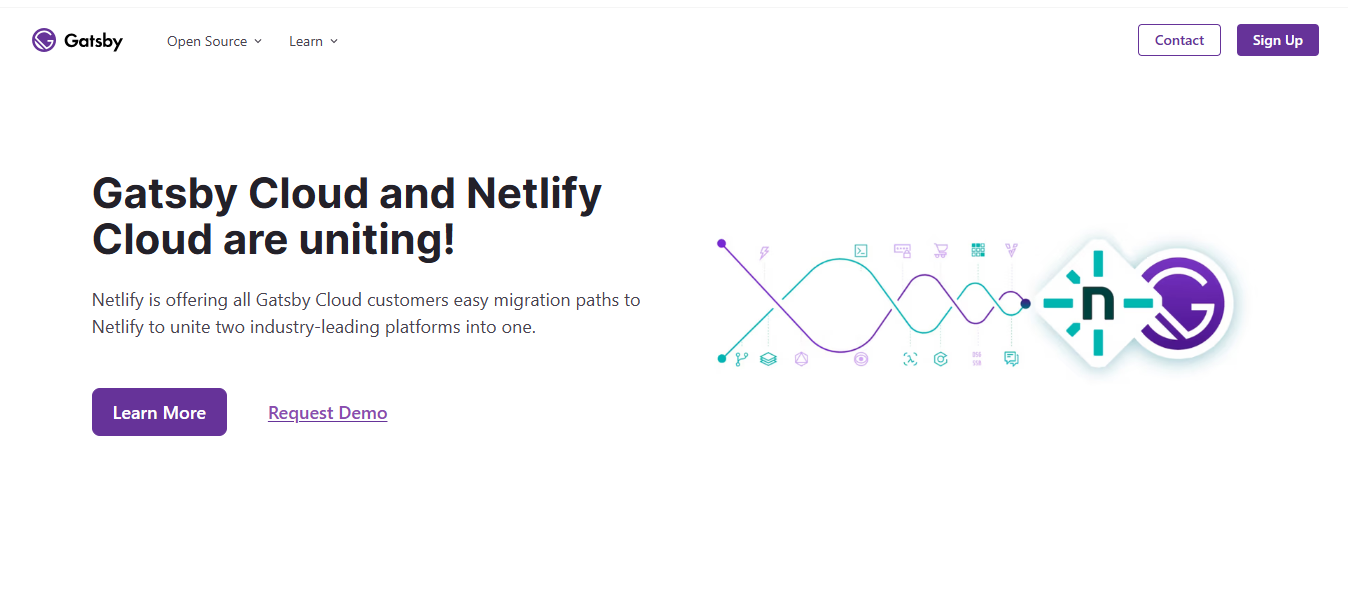
(Source: Gatsby)
Gatsby specializes in creating static sites with lots of plugins for content management and data integration. It delivers high-performance static site generation with a comprehensive plugin system and advanced data layer management.
Core Features
Uses GraphQL for data layer management, provides extensive plugin ecosystem, and generates optimized static sites with excellent performance. It includes automatic image processing, PWA features, and CDN-ready output.
Best For
This framework is perfect for content-heavy websites and blogs that need exceptional loading speed, especially when you need to connect multiple data sources. Ideal for marketing sites, documentation, and content-driven applications.
2025 Updates
Faster build performance, better caching methods, and serverless functionality integration.
12. Chakra UI - Design System Components
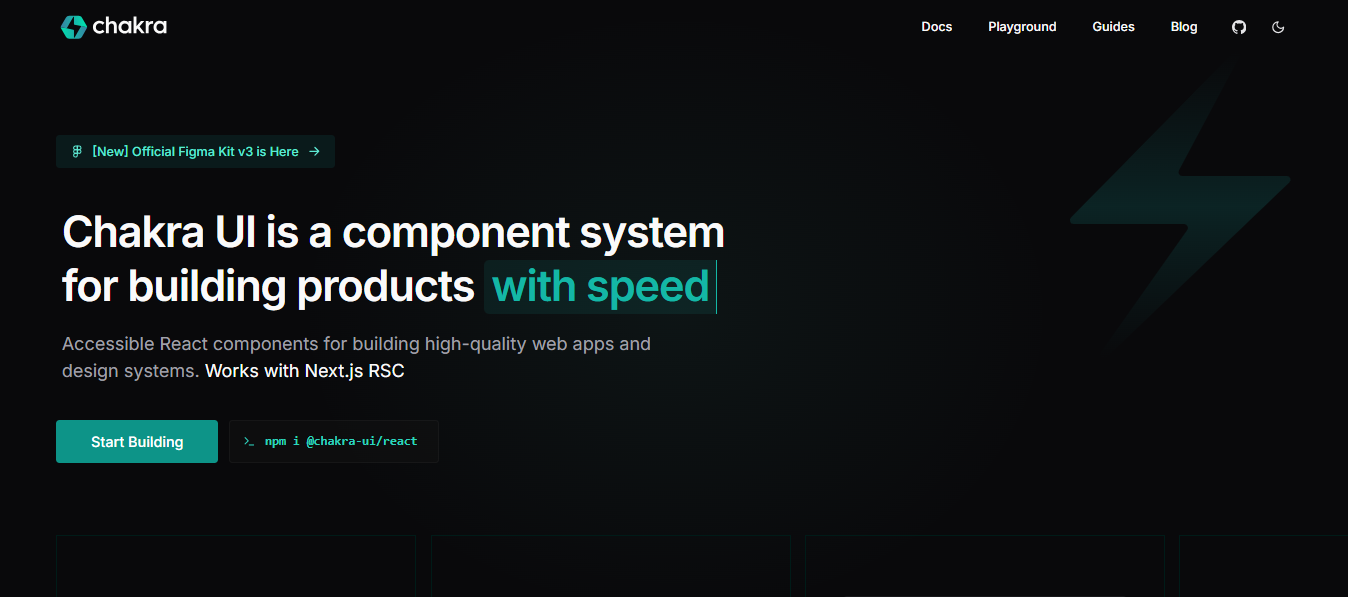
(Source: Chakra UI)
Chakra UI provides a complete component library with integrated design system principles and accessibility standards. It enables consistent design system implementation with built-in accessibility features and extensive customization options.
Core Features
Offers comprehensive component library, built-in dark mode support, responsive design utilities, and extensive theming capabilities. It provides consistent spacing, typography, and color systems with accessibility built-in.
Benefits
This library helps you quickly develop visually consistent applications with professional design standards, reducing the time needed to create polished user interfaces. Speeds up development while maintaining design consistency.
2025 Updates
Advanced theming options, pre-built layout patterns, and possible motion library integration.
13. Material-UI (MUI) - Material Design Implementation
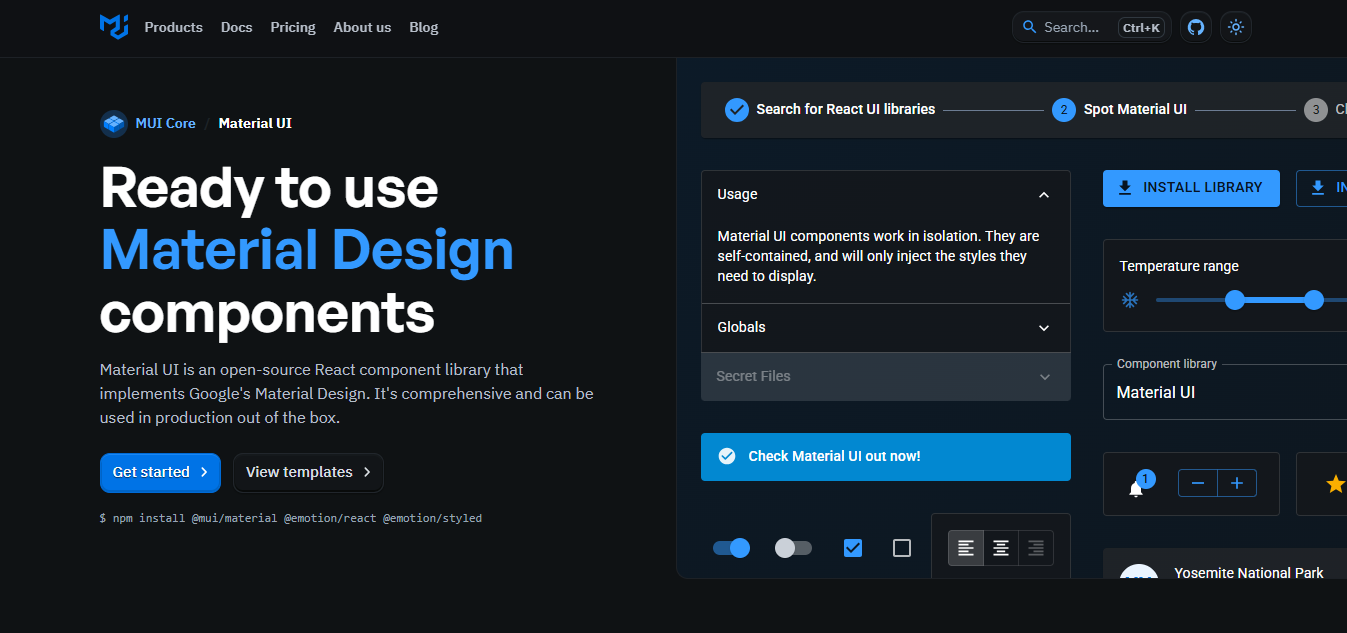
(Source: Material UI)
MUI implements Google's Material Design principles in React, providing extensive component libraries and customization options. It offers a complete Material Design component set with strong community support, extensive documentation, and flexible theming capabilities.
Core Features
Provides comprehensive Material Design components, advanced theming system, and extensive customization options. It includes data grid components, date pickers, and complex UI elements with consistent Material Design styling.
Best For
This library is suitable for business applications that need familiar, polished user interface patterns that users recognize and trust. Perfect for admin dashboards, enterprise applications, and professional tools.
2025 Updates
Performance improvements through custom builds, better theming controls, and experimental new components.
14. Styled Components - CSS-in-JS Solution
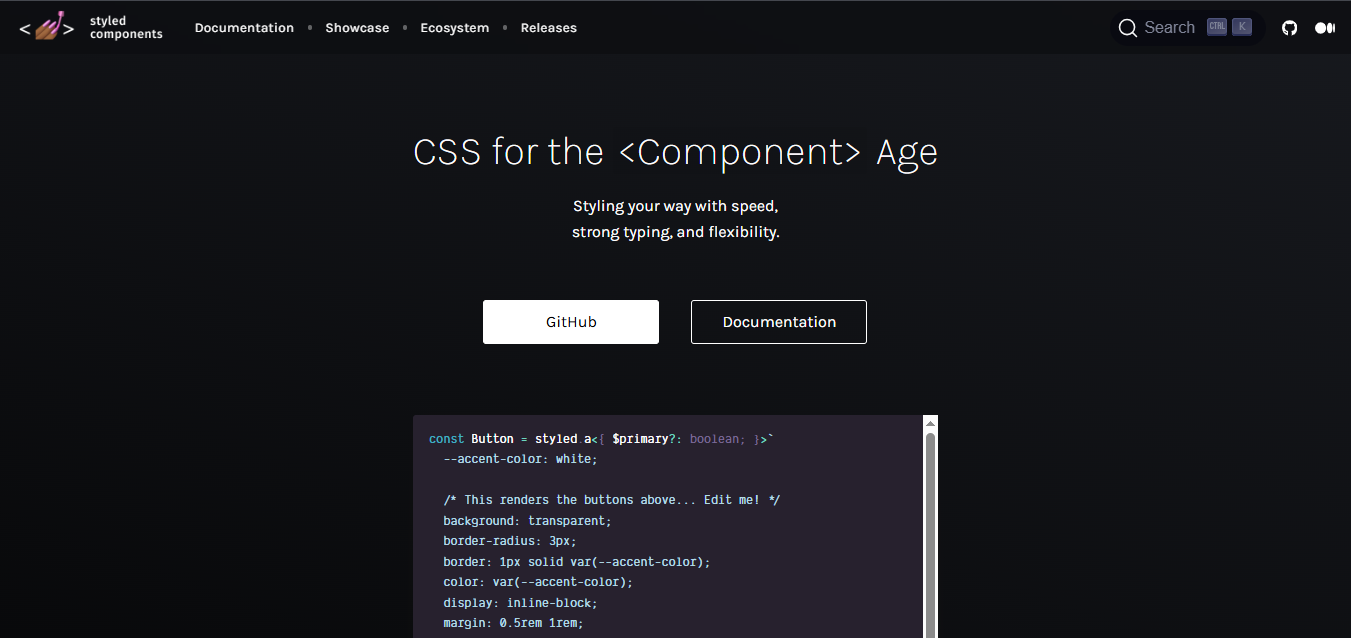
(Source: Styled Components)
Styled Components lets you write component-specific styles in JavaScript, eliminating CSS class name conflicts and enabling dynamic theming. It provides scoped component styling with dynamic theme support and JavaScript-integrated styling capabilities.
Core Features
Enables component-scoped styling, dynamic styling based on props, automatic vendor prefixing, and theme support. It eliminates CSS class name conflicts and provides better developer experience with syntax highlighting.
Benefits
This library promotes modular development while maintaining styling consistency across applications, making it easier to manage styles in large codebases. Improves maintainability and reduces styling conflicts.
2025 Updates
Better debugging tools, design token integration, and optimized server-side rendering support.
15. Emotion - Lightweight CSS-in-JS
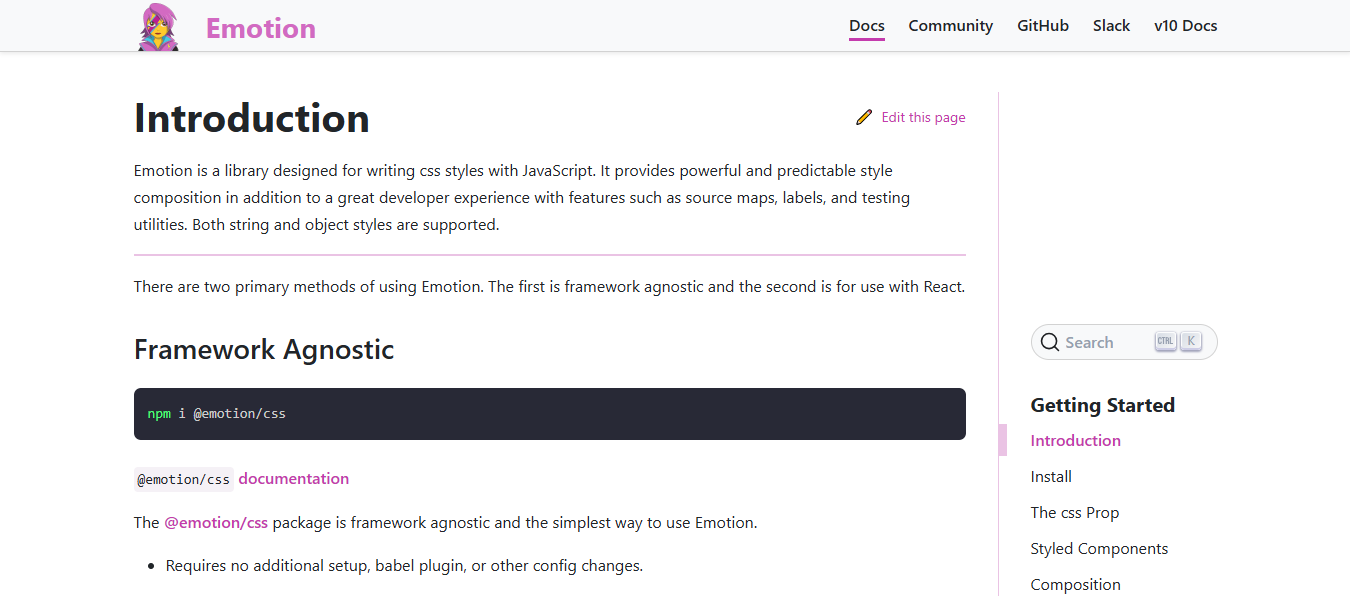
(Source: Emotion)
Emotion provides a performance-focused CSS-in-JS solution with emphasis on flexibility and minimal runtime overhead. It features lightweight implementation with high performance characteristics and flexible styling approaches that adapt to various development needs.
Core Features
Offers multiple styling approaches (styled components, css prop, css function), excellent performance with minimal runtime, and great TypeScript support. It provides flexible theming and supports both runtime and compile-time optimizations.
Best For
This library is ideal for applications where styling performance is critical and developers need maximum flexibility in their styling solutions. Perfect for performance-sensitive applications and complex theming requirements.
2025 Updates
Focus on zero-runtime solutions for optimal rendering performance with minimal overhead.el like home.
16. React i18next - Internationalization
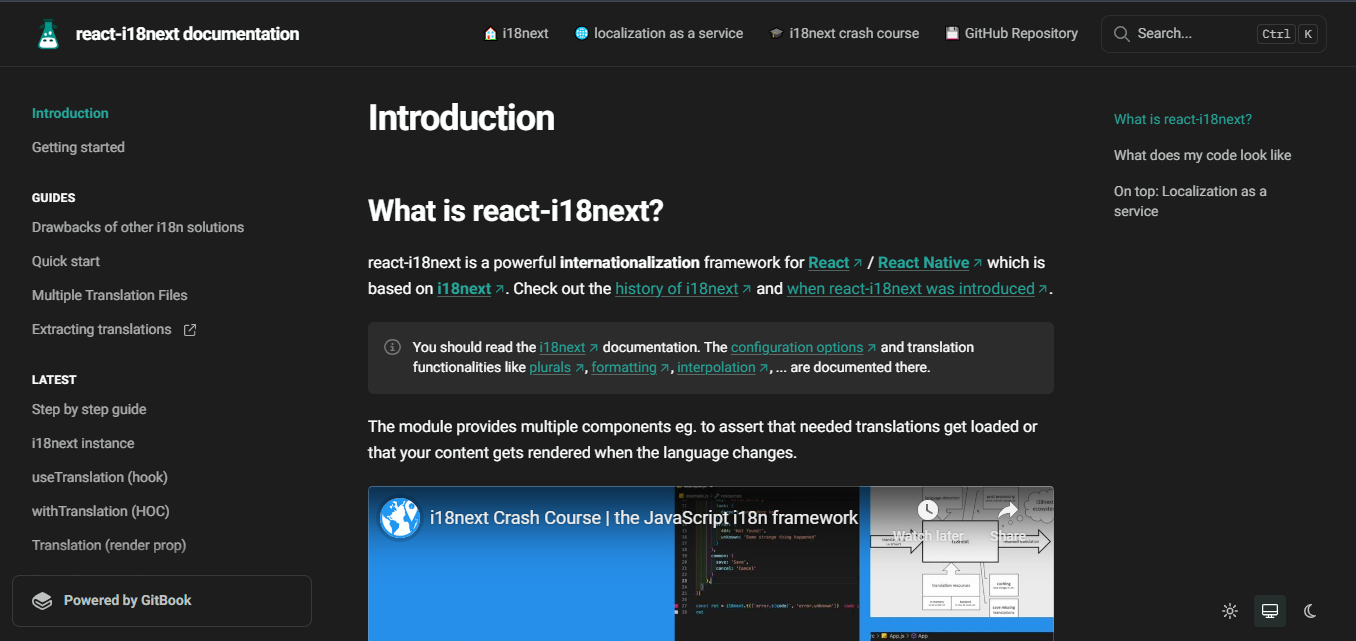
(Source: React i18next)
React i18next helps you build multilingual applications with complete translation management and localization features. It provides seamless React Hook integration, comprehensive plugin ecosystem, and automatic language detection capabilities.
Core Features
Provides translation management, pluralization support, namespace organization, and lazy loading of translations. It supports interpolation, formatting, and context-based translations with automatic language detection.
Best For
This library is essential for applications targeting international markets and diverse user bases, making globalization straightforward and maintainable. Perfect for SaaS applications, e-commerce platforms, and global products.
2025 Updates
Better support for complex language scripts and smarter fallback strategies.
17. React DnD - Drag and Drop Functionality
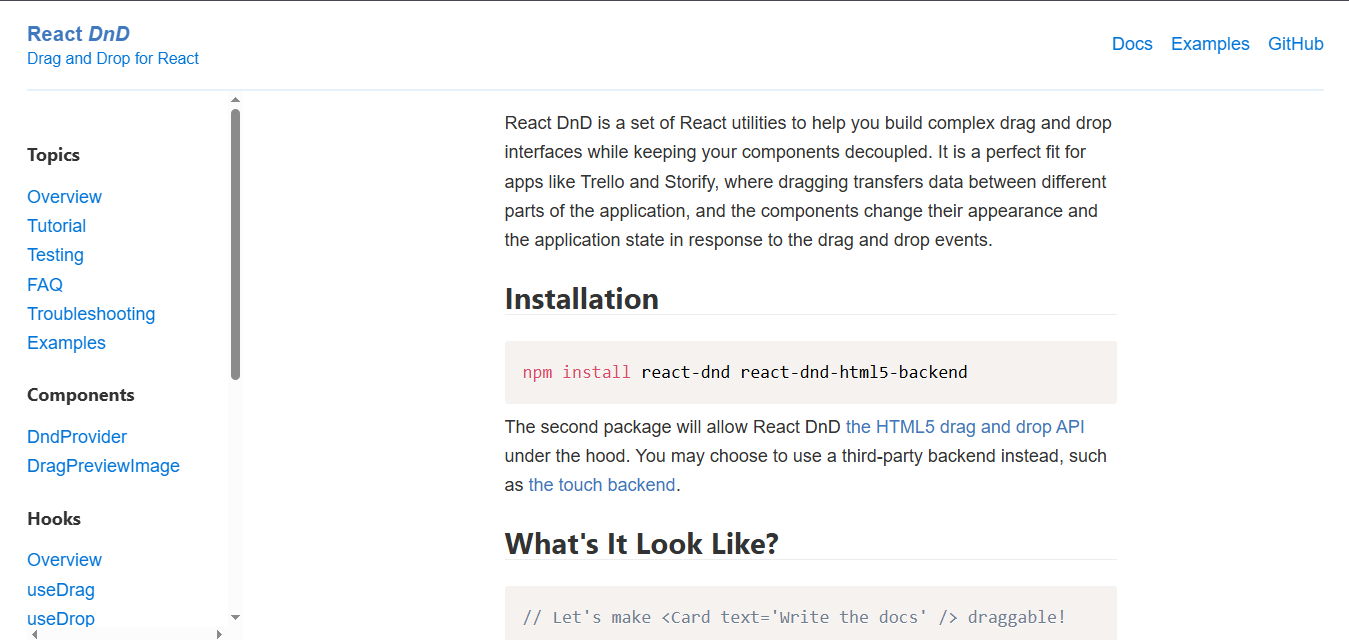
(Source: React DND)
React DnD provides complete drag-and-drop functionality with clean APIs for complex item manipulation and reordering features. It handles all drag-and-drop event management with clean API for complex interactions and extensible architecture.
Core Features
Offers flexible drag-and-drop system with support for multiple drag sources and drop targets, touch device support, and customizable drag previews. It provides clean separation between drag logic and visual representation.
Benefits
This library enables sophisticated user interaction patterns for modern web applications, making complex drag-and-drop scenarios manageable and performant. Creates intuitive user interfaces with advanced interaction capabilities.
2025 Updates
Better touch device support and integrated animation capabilities.
18. React Testing Library - User-Focused Testing
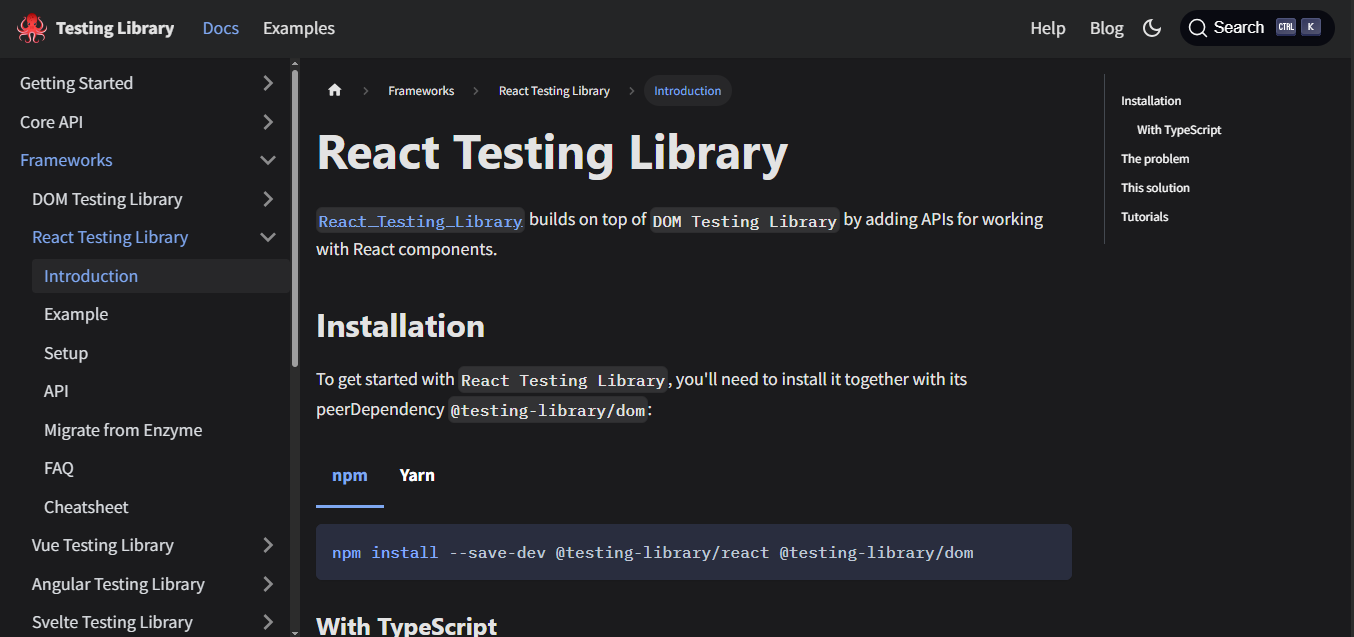
(Source: React Testing Library)
React Testing Library promotes testing methods that focus on user interactions rather than implementation details, improving test reliability and maintainability. It emphasizes user-centered testing approaches with improved test reliability and encourages best testing practices throughout the development process.
Core Features
Provides testing utilities that focus on user behavior, encourages accessibility-friendly queries, and offers simple API for component testing. It promotes testing best practices and discourages implementation detail testing.
Importance
This library is fundamental for maintaining application quality and reducing bugs in production environments. Helps create more reliable tests that don't break when implementation changes.
2025 Features
Better concurrent operation testing and advanced mocking capabilities.
19. Storybook - Component Development Environment
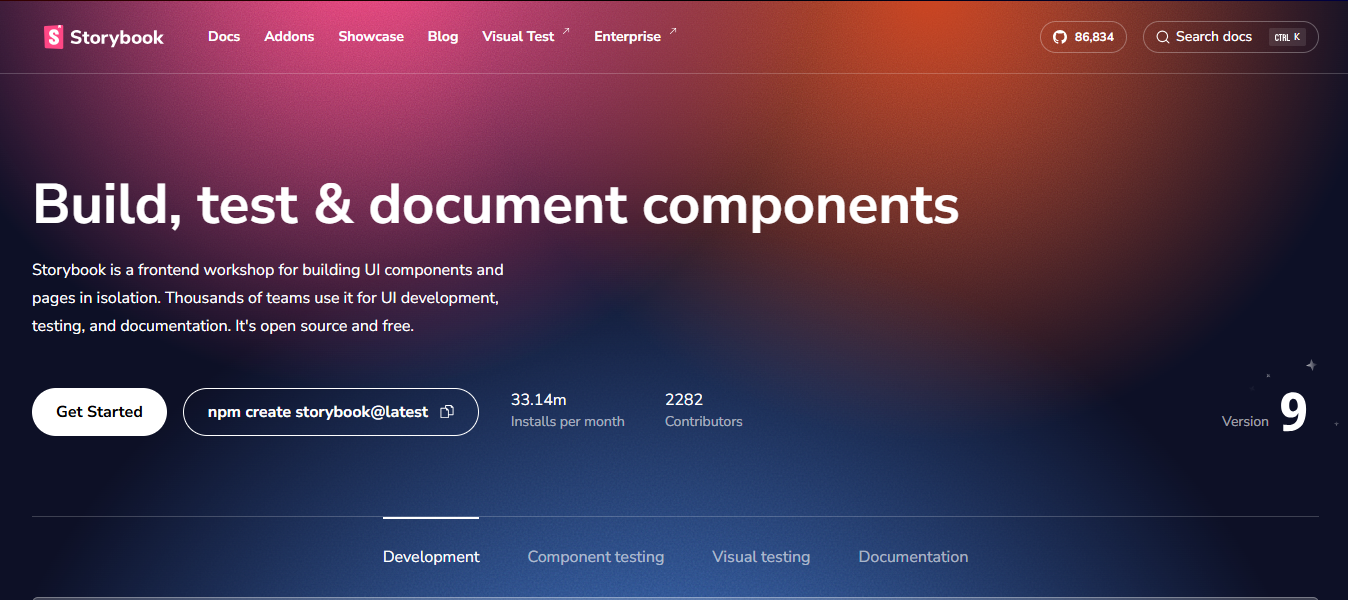
(Source: Storybook)
Storybook provides isolated component development and documentation capabilities, helping teams collaborate better. It enables isolated component development with comprehensive documentation generation and cross-team collaboration facilitation.
Core Features
Offers isolated component development environment, automatic documentation generation, interactive component testing, and extensive addon ecosystem. It supports multiple frameworks and provides visual regression testing capabilities.
Benefits
This tool improves component development efficiency and team collaboration processes, making it easier to maintain design systems and component libraries. Enhances development workflow and component quality.
2025 Updates
Cleaner interface, better design tool integration, and automated documentation generation.
20. React Hot Toast - Notification System
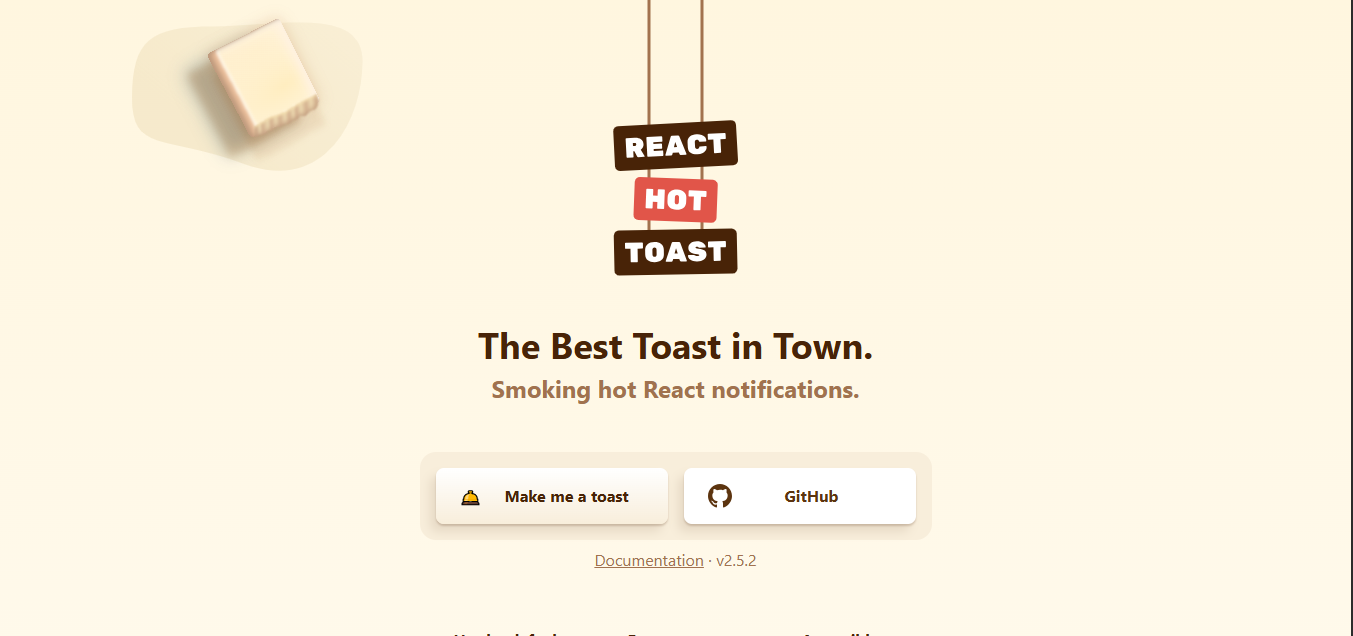
(Source: React Hot Toast)
React Hot Toast delivers elegant notification solutions with customizable designs and smooth animations for user feedback systems. It provides professional notification animations with extensive customization options and minimal implementation complexity.
Core Features
Provides customizable toast notifications, smooth animations, promise-based notifications, and positioning options. It offers different notification types (success, error, loading) with consistent styling and behavior.
Importance
This library is essential for providing clear user feedback and system status communication, enhancing overall user experience with polished notification interfaces. Improves user experience with clear feedback mechanisms.
2025 Updates
Better theming capabilities, improved multiple notification handling, and brand-consistent transitions.
21. React Flow - Visual Diagram Components
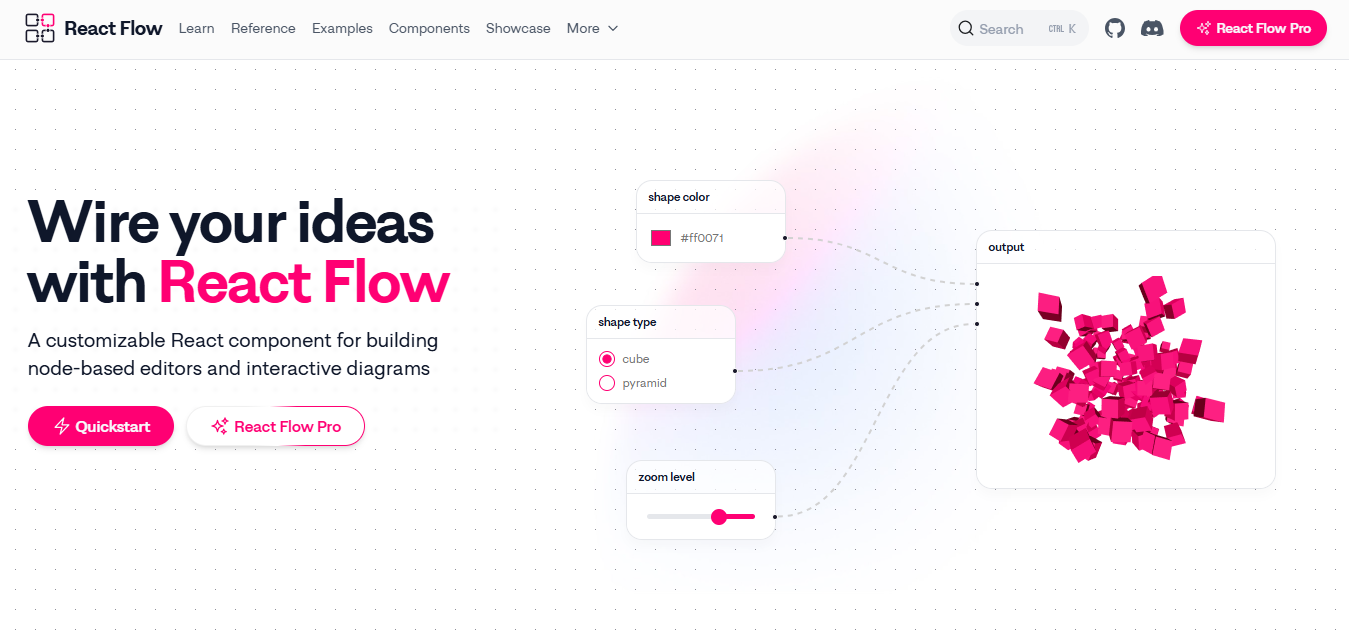
(Source: React Flow)
React Flow enables creation of interactive flowcharts, mind maps, and workflow editors with draggable nodes and customizable connections. It provides interactive node-based interfaces with customizable connection systems and dynamic layout capabilities.
Core Features
Offers draggable nodes, customizable connections, zoom and pan functionality, and minimap support. It provides different node types, edge types, and supports complex diagram interactions with performance optimization for large diagrams.
Best For
This library is ideal for applications requiring visual workflow representation and interactive diagrams, enabling developers to build sophisticated visualization tools. Perfect for workflow builders, mind mapping tools, and data visualization.
2025 Updates
Performance improvements for large diagrams and advanced node state management.
22. React Beautiful DnD - List-Focused Drag and Drop
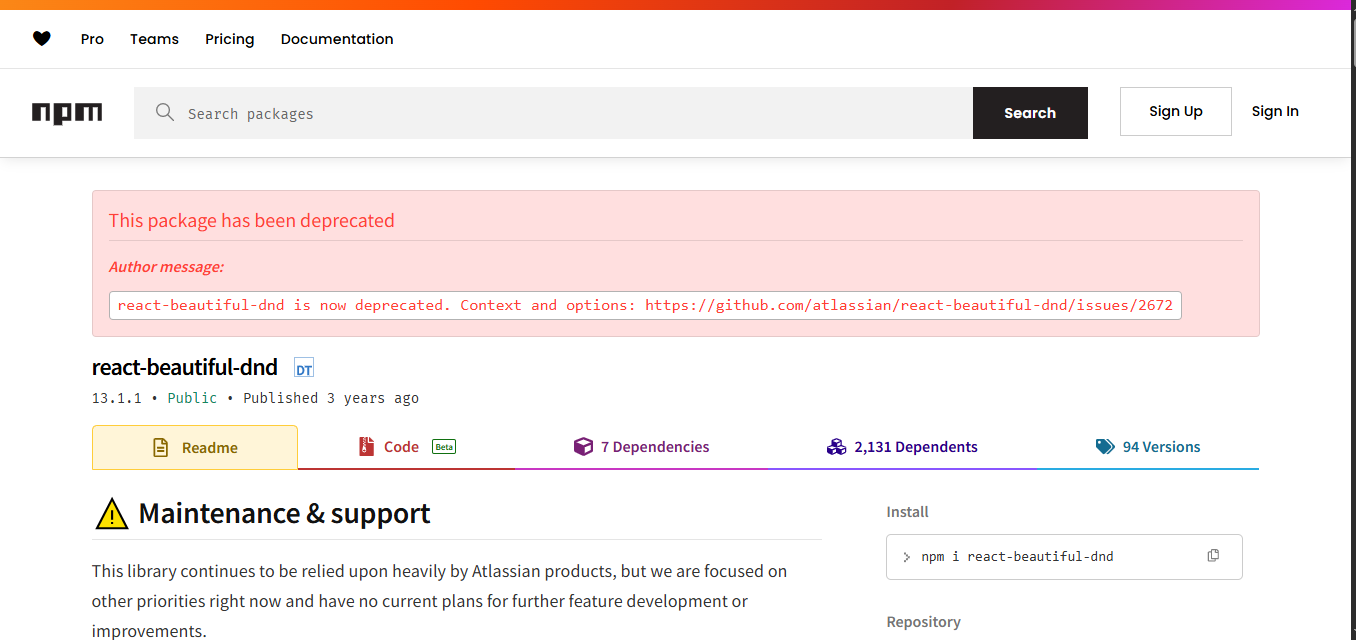
(Source: React beautiful DnD)
React Beautiful DnD specializes in list-based drag-and-drop functionality with emphasis on smooth animations and accessibility. It offers optimized list reordering with natural animation systems and built-in accessibility support including keyboard navigation.
Core Features
Provides beautiful drag animations, accessibility support, keyboard navigation, and optimized performance for list reordering. It handles complex scenarios like multi-column layouts and conditional dropping with smooth visual feedback.
Best For
This library is perfect for Kanban boards, reorderable lists, and similar interactive interfaces that require smooth, accessible drag-and-drop experiences. Ideal for task management applications and content organization tools.
Special Features
Keyboard navigation support and smooth dragging experiences designed specifically for list manipulation.
23. React Window - List Virtualization
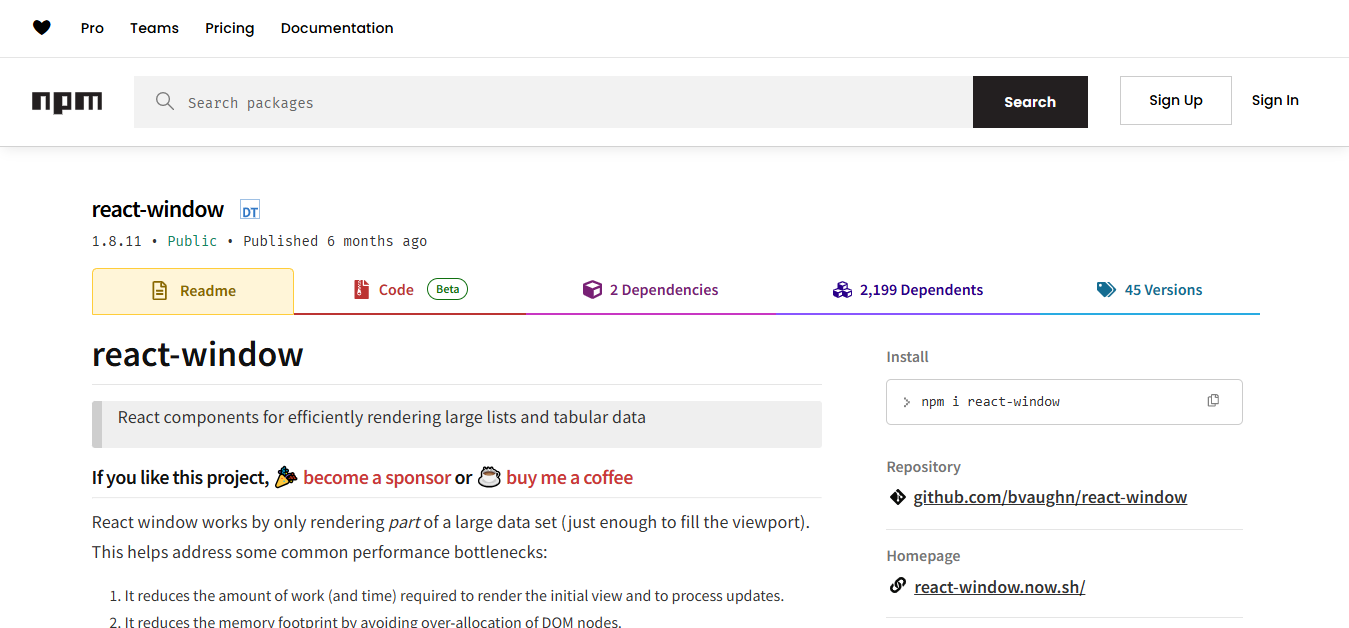
(Source: React Window)
React Window provides lightweight list virtualization capabilities, optimizing performance for large datasets while maintaining implementation simplicity. It features minimal bundle size impact with simplified virtualization API and high performance for basic virtualization needs.
Core Features
Offers efficient rendering of large lists, fixed and variable size item support, horizontal and vertical scrolling, and minimal memory footprint. It provides simple API for common virtualization scenarios with excellent performance characteristics.
Benefits
This library serves as an efficient solution for displaying large datasets without compromising application performance, offering a streamlined alternative to more complex virtualization solutions. Dramatically improves performance for large lists.
Performance Note
Designed specifically for scenarios requiring efficient large dataset rendering.
24. React Helmet - Document Head Management
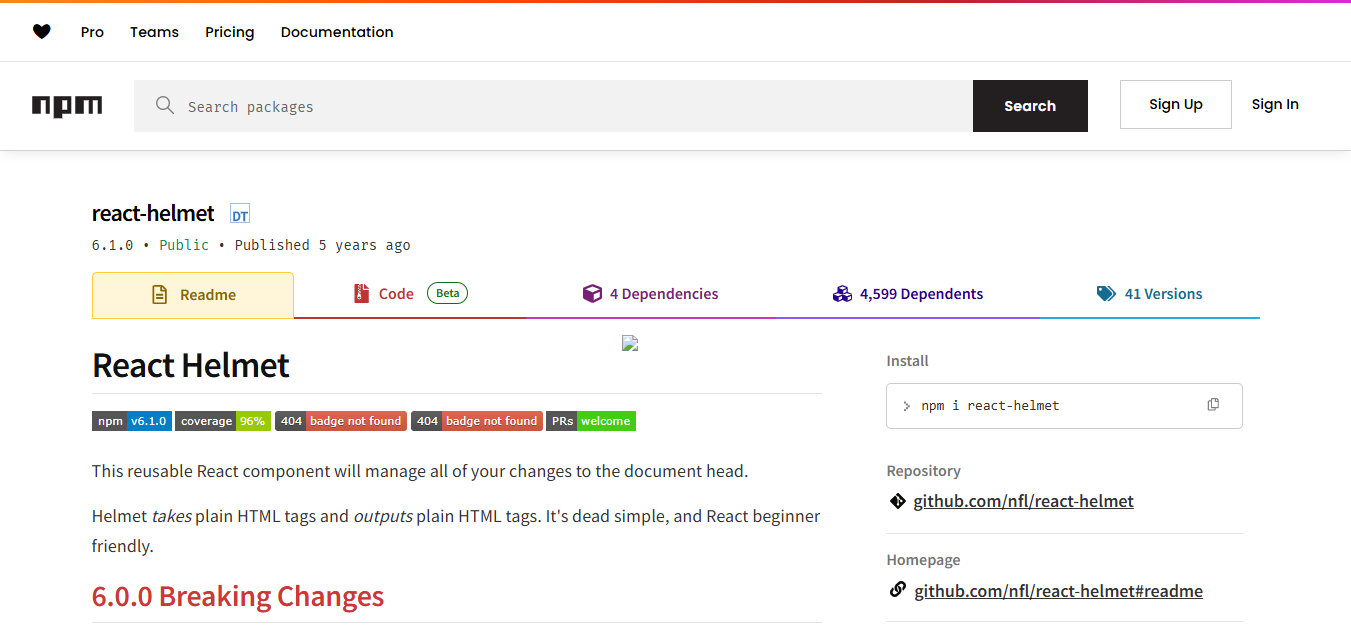
(Source: React Helmet)
React Helmet enables dynamic management of document head elements from within React components, supporting SEO optimization for single-page applications. It provides dynamic head element management with SEO optimization capabilities and component-based head control.
Core Features
Allows dynamic management of document title, meta tags, link tags, and other head elements from React components. It supports server-side rendering and provides proper cleanup of head elements when components unmount.
Importance
This library is critical for single-page applications requiring search engine visibility and proper metadata management, ensuring applications maintain SEO best practices. Essential for proper SEO implementation in React applications.
2025 Updates
Better server-side rendering support and improved React pattern integration.
25. React Select - Advanced Dropdown Components
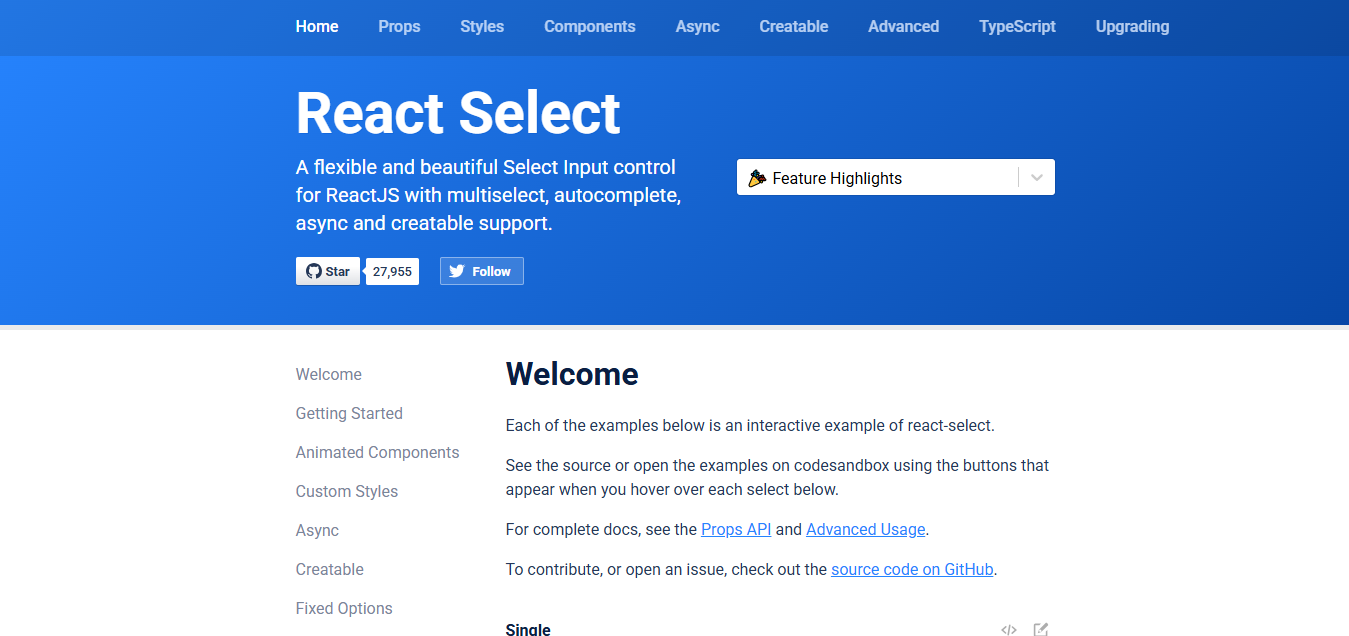
(Source: React select)
React Select provides sophisticated dropdown functionality including async loading, multi-select capabilities, and comprehensive customization options. It offers advanced dropdown functionality with async data loading support and comprehensive accessibility features that handle complex selection scenarios.
Core Features
Offers multi-select support, async data loading, search functionality, and extensive customization options. It provides keyboard navigation, accessibility compliance, and flexible styling with support for complex selection scenarios.
Benefits
This library addresses complex selection requirements without custom implementation overhead, providing professional dropdown experiences out of the box. Saves development time while providing advanced functionality.
2025 Updates
Better mobile experience, enhanced accessibility standards, and expanded styling customization.
Conclusion
The React ecosystem in 2025 continues to provide complete solutions for modern web application development. From established libraries like React Router and Redux to innovative tools like Recoil and React Query, developers have access to mature, well-maintained solutions for virtually every development challenge. These libraries collectively address core development concerns including state management, user interface design, performance optimization, and user experience enhancement. By using these tools appropriately, development teams can focus on business logic and creating user value rather than solving common technical problems.
